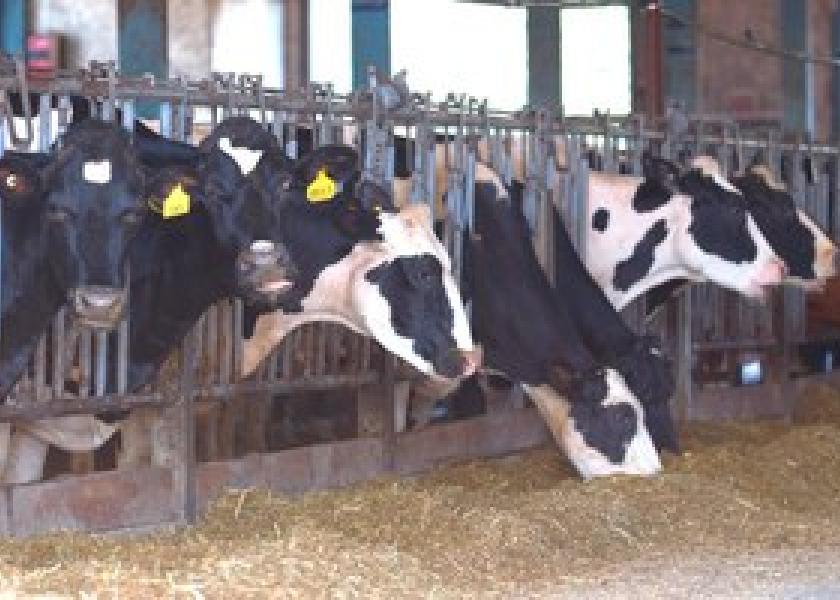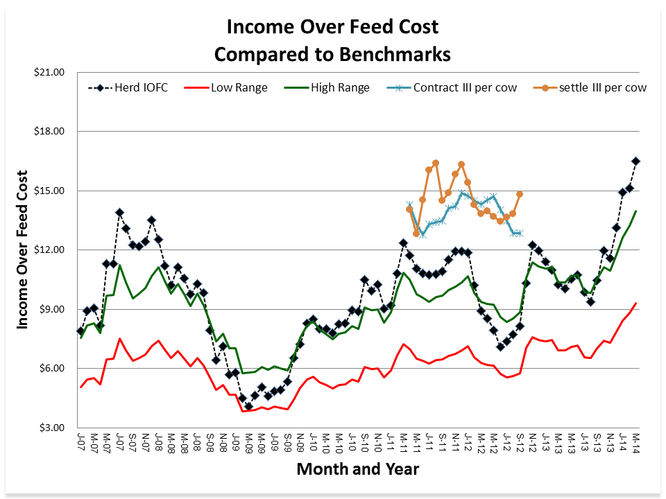Penn State Dairy Herd Manages Through Cold Winter

Maintaining energy requirements through the cold winter keeps the Penn State Dairy Herd milking consistently to take advantage of almost a $30 milk price.
March was an uneventful month. The weather was becoming more seasonal and the herd remained on a 60% forage diet. Overall the herd performed very well. For the past three months the energy corrected milk has averaged 89 pounds/cow.
The herd ration was fairly consistent except for some minor changes to the corn silage source. The bunk corn silage being fed started to transition back into the 2012 silage. When filling silos in the fall we were not completely finished with this particular bunk. The decision was made to stop feeding it and fill with 2013 silage.
Since the 2012 silage was very high in starch content, we opened a bag of 2013 corn silage to blend the two for the herd. The cows continued to average 85 pounds.
The bunk was finished the second week in the month and we switched to a blend of the upright corn silage and the bag. The cows came up two pounds in milk. I have observed this many times with our cows that they perform better on dryer corn silage (upright or bag) compared to the wetter material stored in the bunk. The forage analysis on the 2012 corn silage was almost identical to the 2013 upright corn silage. The major difference was dry matter percent. The bunk dry matter percent averaged 39% compared to the upright at 47%. To successfully store silage at this dry matter it is chopped fine, probably finer than most producers would feel comfortable feeding. However, our cows respond very well in both production and components.
Coming off of an extremely cold winter I have been concerned about cows receiving adequate energy. I went through the herd examining body condition. I was extremely pleased how well cows were maintaining condition. Our lactating herd generally scores around 3.0 to 3.1 on the five point scale. Cows appeared to average a 3.2 to 3.3. Since increasing the sugar content in the fresh pen, cows have continued to average 10 pounds above where they had been before the change.
This year has been starting off very well when examining milk price, milk income and feed costs. This is the time for producers to optimize income. However, I have worked with several producers recently who are missing out on some opportunities. Herds that are performing well and keeping feed costs in line have their feed costs at 30% of their milk income. The Penn State herd is ranging between 29-31%. Herds not doing such a good job are around 40%. Normally this would be good, but right now with the strong milk price this shows some missed opportunities. In the popular press there are many statements about lower feed costs. That is all relative because feed costs are still high, just not as high. The first 3 months in 2013 had our feed cost averaging $7.20/cow compared to the same time this year of $6.63/cow. Herds maintaining high milk income are not feeling the pinch as much regarding the feed cost. However, if these feed costs stay relatively high and milk price would drop significantly, then herds will experience a negative impact to their cash flow. It isn’t a matter of if the milk price will drop but when it will drop.
For the month of March the herd averaged 86.3 pounds with a 3.82% milk fat, 3.22% milk protein, 127,000 SCC and 7.9 mg/dl MUN.
Source: Penn State University Extension








